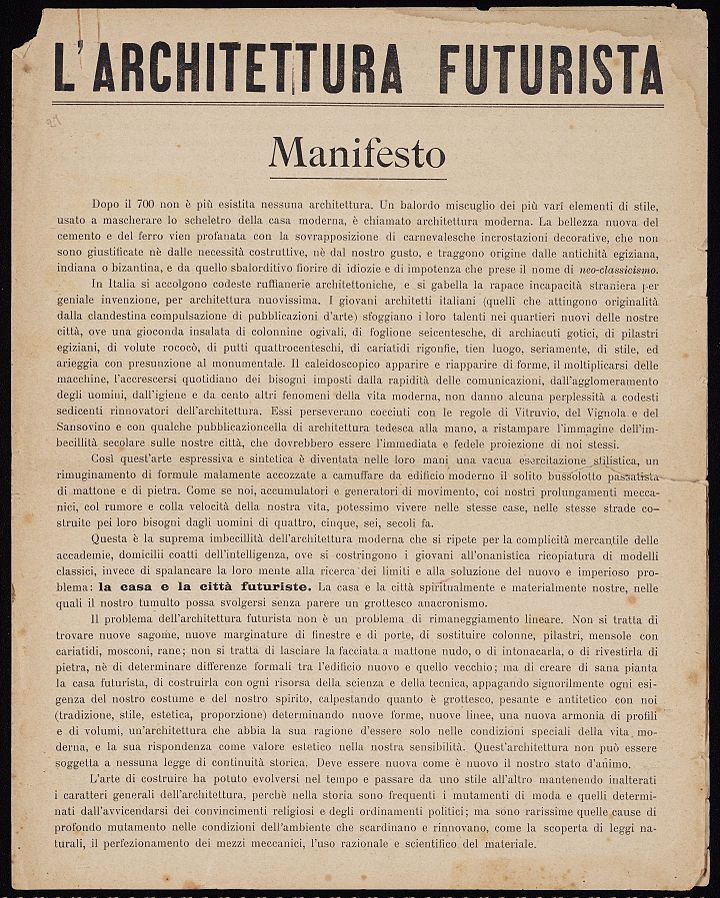Call us hypocrites, but we’re tired of reading generic ‘
Now, we’re not here to denigrate well-written pieces of content on topics your audience engage with. No siree. We’ve written far more than our fair share of puff pieces and they’re all predictably great. They keep a website looking fresh and fill it with lots of naturally occurring relevant and conversational search terms (ideal for picking up visitors from all four corners of the web). However, if you’re going to invest in online content and squeeze the maximum juice from it, you need to plan a more coordinated attack.
So, if you’re tired of pumping out: ‘9 Clever Ways to Improvise a G-String in the Forest’ and ‘6 Weird Muffins That Look Like They Have Faces’, sit up and listen while we hit you with some wisdom. But first…
A very small manifesto

A minifesto, if you will.
You’re shelling out for content, right? Whether you’re taking care of business in-house or outsourcing it to wizards like us, the chances are you want the best value for money. For many, that means getting as much content as possible. But content doesn’t work like that. At
It’s pop quiz time
Would you rather have:
a) A one-off blog which is nearly identical to six others written by competitors and already ranking highly for relevant natural search terms; or
b) A powerful piece of unique web content which:
fulfils a need you’ve identified in your target market;- establishes you as an authority in your field;
- adds to an existing blog roll of clear, cohesive advice, information and entertainment that your target market will want to peruse and return to;
- makes visitors chow down a whole post, hit a ‘read more like this’ button, remember your brand and maybe even follow a call to action?
We thought as much. Yes, it’s an initial investment in brainpower and resources, but being clever about online content over the long-term – and evaluating its effectiveness throughout the year – really pays off when you do it right.
Make the algorithms happy
If common sense doesn’t convince you, maybe mysterious, wishy-washy algorithmic changes will. Google’s algorithm changes aren’t designed to punish you. Rather, they’re here to sort the digital wheat from the chaff and reward the quality they find. No longer is there a viable, shortcut way to game Google. The only way to win at SEO is to do things properly.
That means serving up the very best, most active website to your target market. The better you get, the better you’ll do in the search engine rankings. That doesn’t just go for online content; it also applies to web design, development
A recipe for clever online content

So, how do you become an online content king? Unfortunately, there’s no one-size-fits-all approach. However, there are a few things you can start thinking about and putting into action if you intend to get serious in 2019. To make your online content an awful lot cleverer, you’ll need:
1 tbsp market insight
100g originality
4 tsp communication
A splash of diversity
A good pinch of planning
Season with regular evaluation
I’ll run through these really quickly.
1 tbsp market insight – Before you commission or write anything – ANYTHING – make sure you know who you’re writing it for, how best to speak to them, how a piece of content fills a gap, why your target market need it, what you want them to get from it and what actions you want them to perform on reading it. By understanding your target market, you can start creating content which speaks directly to them. Much better value for money and much more effective.
100g originality – It’s a big wide web out there and to ensure you stand out from the crowd, you need to do something different. Do your research to get a good idea of what competitors are producing. Note what they do well, keep track of what they do badly – then blow it out of the water using all of the brilliant things which make your business different. Please don’t just rehash old articles. Think outside the box.
4 tsp communication – Whether your content guys and gals are in-house or outsourcers, it’s vital to have a close relationship with them. No, there’s no need for cuddling, but make sure they understand what your business does and what you’re hoping to achieve. The better your writers know your business, your content plans and your target market, the more nuanced and finely honed your content will be.
A splash of diversity – We love a good blog, but
A good pinch of planning – It can be hard to keep up, especially when things get hectic, but a well-planned content calendar will work wonders for you when it’s executed correctly. It ensures that you have carefully planned pieces of content which support each other and are being written up as regularly as required (we recommended at least 2 varied pieces per week). A comprehensive calendar will also ensure you don’t miss out on any key dates and events that are relevant to your business.
Season with regular evaluation – Make sure you add an evaluation column to your content calendar too. Undertake a 3 monthly review of how your content strategy is working. We recommend a column for pageviews, a column indicating how many organic visits each post attracted directly, a column for bounce rates and one for conversion tracking (you might need to speak to someone SEO-smart to get this set up in Analytics). Next quarter, tweak your calendar to do more of what works, less of what doesn’t and add a sprinkle of something new to see if you can do even better!
Whew.
Any questions?
Talk to
